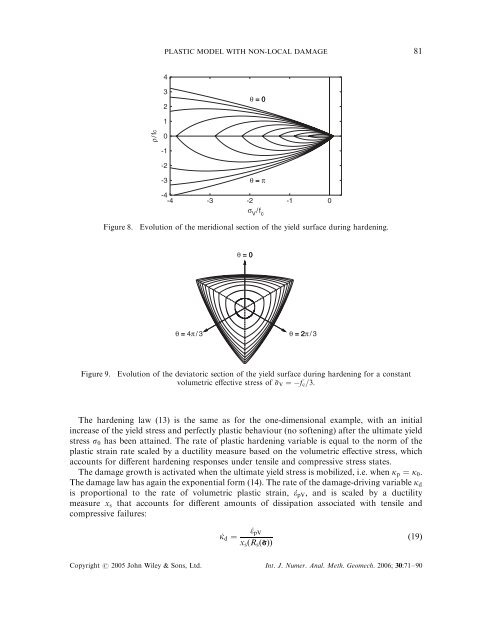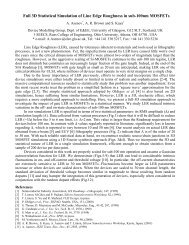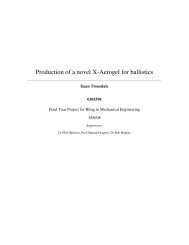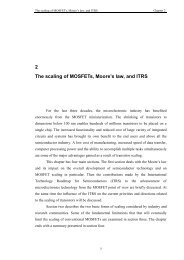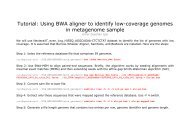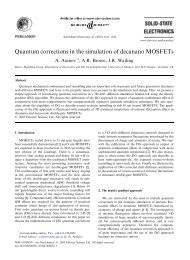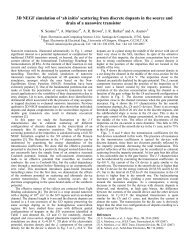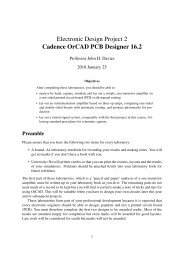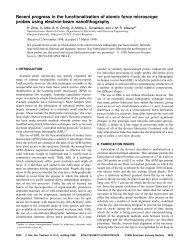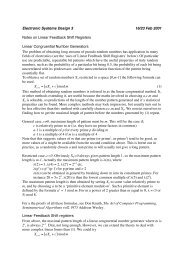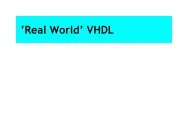Plastic model with non-local damage applied to concrete
Plastic model with non-local damage applied to concrete
Plastic model with non-local damage applied to concrete
Create successful ePaper yourself
Turn your PDF publications into a flip-book with our unique Google optimized e-Paper software.
PLASTIC MODEL WITH NON-LOCAL DAMAGE 81432θ = 01ρ / fc0-1-2-3θ = π-4-4 -3 -2 -1 0σ V /f cFigure 8.Evolution of the meridional section of the yield surface during hardening.θ = 0θ = 4π / 3θ = 2π / 3Figure 9.Evolution of the devia<strong>to</strong>ric section of the yield surface during hardening for a constantvolumetric effective stress of %s V ¼ f c =3:The hardening law (13) is the same as for the one-dimensional example, <strong>with</strong> an initialincrease of the yield stress and perfectly plastic behaviour (no softening) after the ultimate yieldstress s 0 has been attained. The rate of plastic hardening variable is equal <strong>to</strong> the norm of theplastic strain rate scaled by a ductility measure based on the volumetric effective stress, whichaccounts for different hardening responses under tensile and compressive stress states.The <strong>damage</strong> growth is activated when the ultimate yield stress is mobilized, i.e. when k p ¼ k 0 :The <strong>damage</strong> law has again the exponential form (14). The rate of the <strong>damage</strong>-driving variable k dis proportional <strong>to</strong> the rate of volumetric plastic strain, ’e pV ; and is scaled by a ductilitymeasure x s that accounts for different amounts of dissipation associated <strong>with</strong> tensile andcompressive failures:’k d ¼ ’e pVx s ðR s ð%rÞÞð19ÞCopyright # 2005 John Wiley & Sons, Ltd. Int. J. Numer. Anal. Meth. Geomech. 2006; 30:71–90


